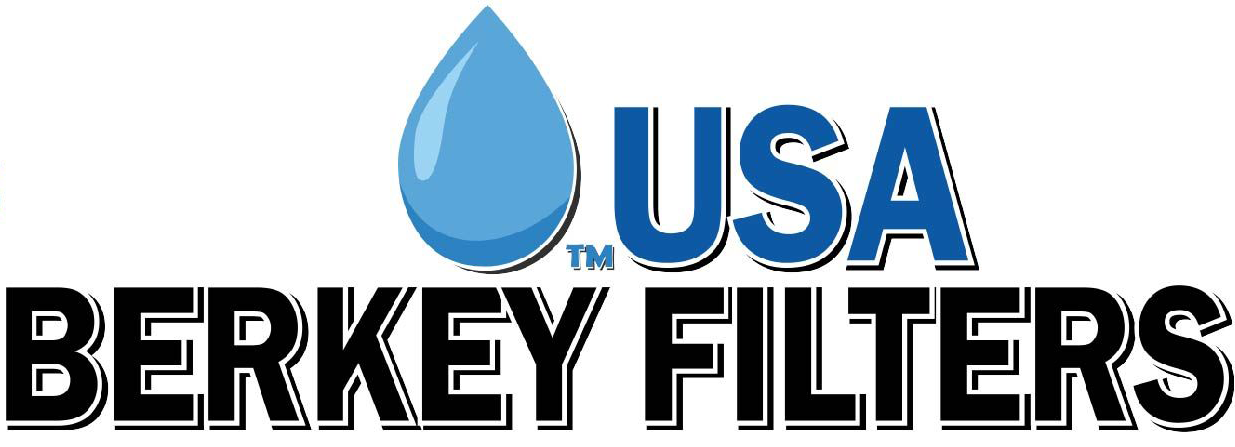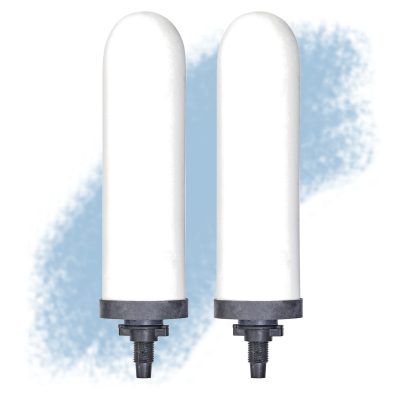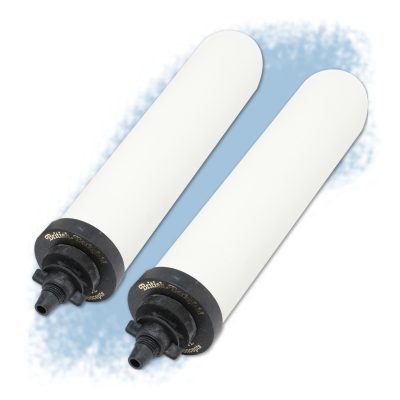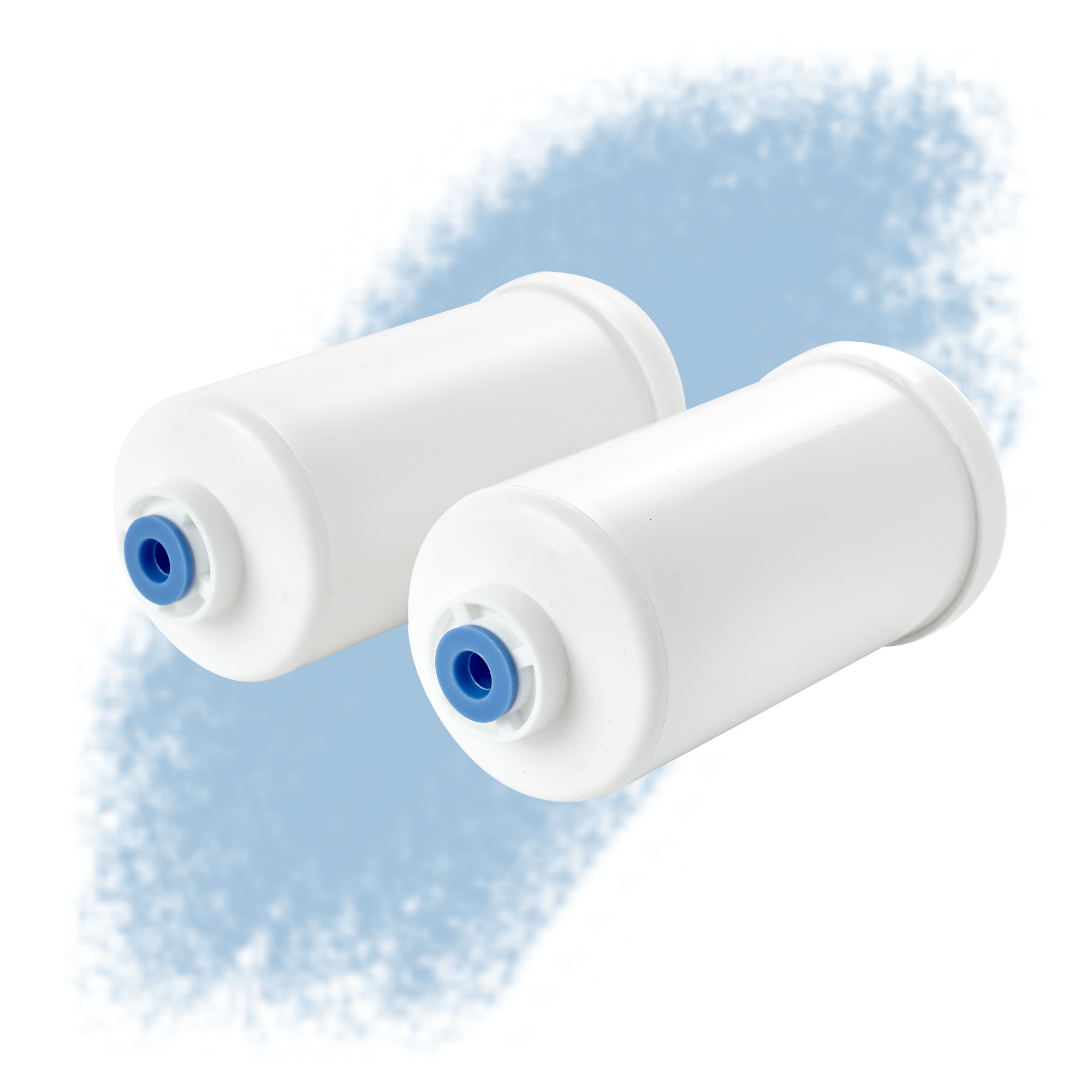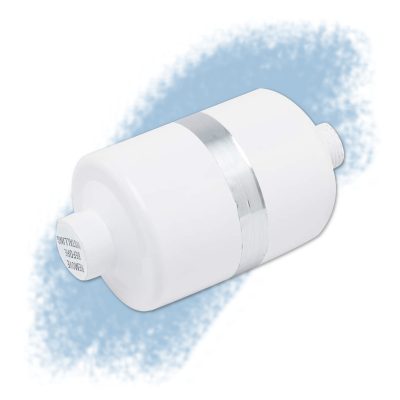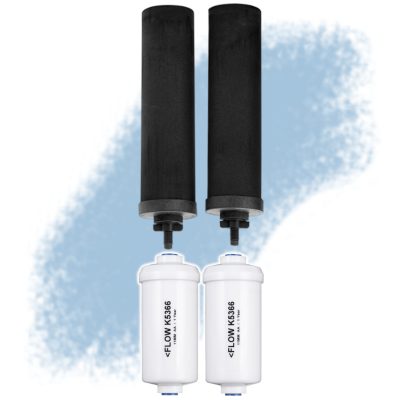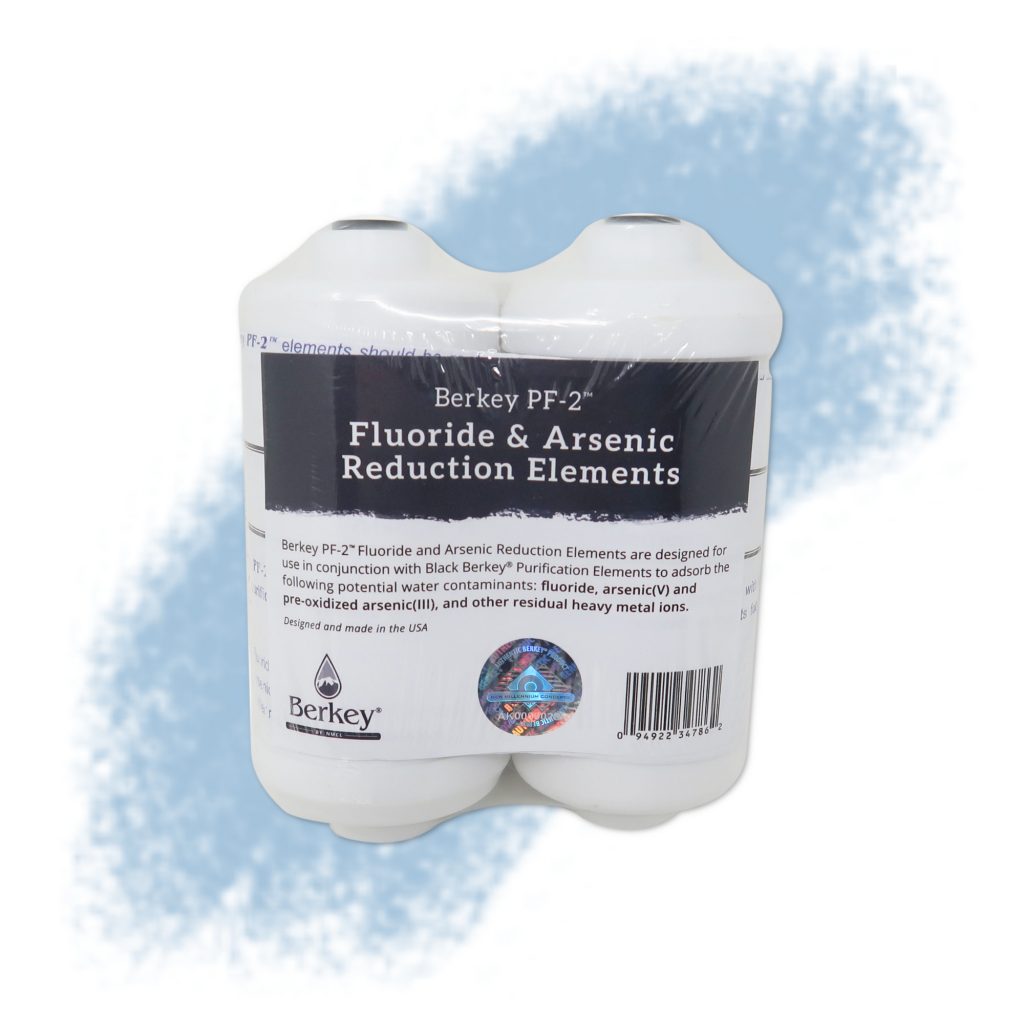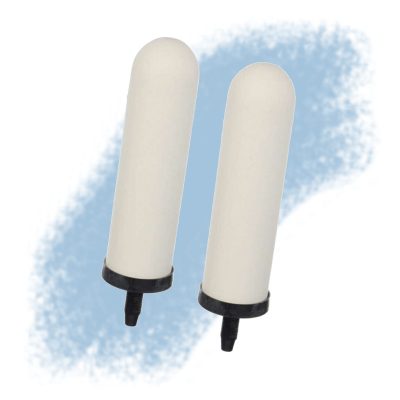Specifications
PF-4 Fluoride and Arsenic Reduction Filters are designed to be used in conjunction with the Berkey Earth® Elements or the Super Sterasyl™ Ceramic Filter Elements. PF-4s are made from safe, non-leaching Polypropolene #5 that is BPA-free. **For Super Sterasyl Ceramic Filters Only, these DO NOT attach to the Black Berkey Elements.**
Reduces:
– MTBE (Methyl-tertiary-butyl-ether)
– Fluoride
– Lead
– Arsenic
PF-4™ filters are also designed to adsorb:
– DBCP (Dibromo-chloro-propane)
– THMs (trihalomethanes)
– Herbicides & Pesticides
– Heavy Metal ions
Installation
- Number of PF-4s in the bottom chamber must match the number of Berkey Earth® Elements or Super Sterasyl™ Ceramic Filter Elements in the top chamber; for example, 2 Berkey Earth® Elements would require 2 PF-4 Filters
Assemble the water filter as per the water filter assembly instruction. On the underside of the upper chamber locate the stem of each ceramic filter (do not remove the wing nut holding the ceramic filter in place). With clean hands, remove blue caps and screw a PF-4™ filter onto each filter stem (the blue arrow should point away from upper chamber) giving five full revolutions. Do not screw more than five revolutions as this may damage the internal media screen. When complete, seat upper chamber on top of the lower chamber. Fill upper reservoir. When the lower reservoir is full, discard the first batch of water, which may contain process dust. (Note: when lower chamber is full of water, the PF-4™ filters will be immersed).
Technical
MTBE:
The PF-4™ is manufactured to exceed ANSI/NSF Standard 53 which requires that MTBE be reduced by at least two thirds from an influent rate (water going in) of 15ppb to an effluent rate (water going out) of less than 5ppb (> 95% reduction*). LEAD: Tests have shown that when 2000 gallon (7,600 liters) of influent water at a concentration of lead of 150-200 ppb pass through 200 grams of media at a flow rate of 1 gpm (3.8 lpm), the lead level was reduced to less than 1ppb (>99% reduction). FLUORIDE:Testing for fluoride was based on 20-30ppm of the ion in the influent aqueous solution at a flow rate of no more than 3 gpm (11 lpm) per cubic foot of media. Results of < 1ppm of the fluoride ion in the effluent were typical for the media (>95% reduction).Under optimum conditions, effluent concentrations of less than 50 ppb were readily achieved (>99.75% reduction).
MTBE (Methyl-tertiary-butyl-ether) is the most common oxygenated fuel additive used in reformulated gasoline. Contamination of groundwater with MTBE is a rapidly growing problem in 49 U.S. states. In drinking water, even trace amounts of MTBE can cause taste and odor problems, which may lead to nausea and dizziness. The potential long-term health effects of MTBE are not understood at this time, however, initial studies indicate MTBE may cause kidney and liver problems. MTBE removal from water is a challenge because it is very soluble in water and must compete with other organics for binding sites on the filter medium. These other contaminants (BTEX – and TOC – total organic carbons) are adsorbed more readily, and MTBE often slips by standard carbon filters, ending up in the filtered water. The PF-4™ filter has been specifically designed to remove MTBE from drinking water when used in conjunction with Super Sterasyl™ceramic filtration elements. The media within the Super Sterasyl™ filters, in the upper chamber, capture the more strongly adsorbed BTEX and TOC’s. This permits the downstream PF-4™, secured as a post filter, to more efficiently remove MTBE.
Replacement
Under normal conditions it is recommended that PF-4™ elements be replaced at six-month intervals (Actual capacity is dependent on the presence of other competing contaminants in the source water. High levels of total organic carbons, volatile organic compounds or certain inorganic minerals may reduce the capacity and efficiency of these elements.)*. Note: do not boil this element.
